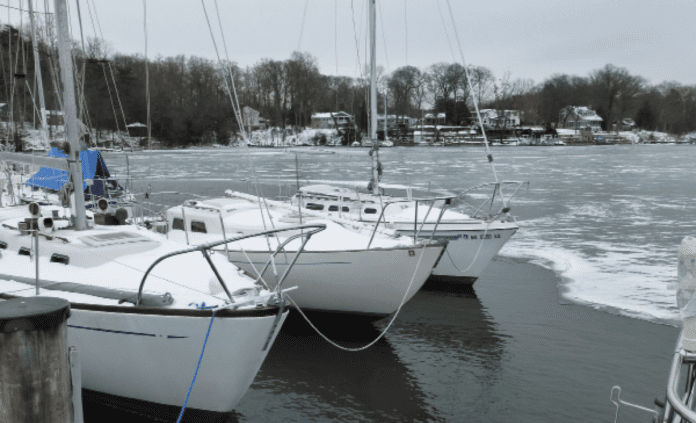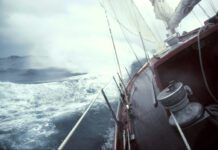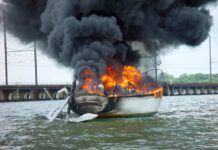Boatowners who have the option of moving their boats to protected water before a hurricane strikes should consider rivers, canals, or backwater creeks instead of marinas. If the site is a narrow canal or river, you may be able to run multiple lines ashore to trees or mangroves on both sides. If the waterway is wide, you can also anchor.
Marine industry professionals advise using helix moorings, but there are some other anchoring techniques that have worked as well. The key is to use more and larger anchors, and those that are appropriate for the type of bottom. Boats have survived hurricanes when anchored with two anchors with unequal length lines set 60-90 degrees apart. Another arrangement consists of using three very large anchors set 120 degrees apart with the rodes leading to a central pendant. Note that each anchor must be capable of taking the full load. A tandem anchoring system, where a second anchor is attached to the first one via a length of chain, adds additional holding power. With any of these systems some kind of snubber-like a length of nylon line-must be incorporated into chain rode(s). Deep water anchorages will see less wave action than shallow ones, allowing the chain catenary to absorb some of the load.
Whether your vessel is moored or anchored, chafe will be a certainty if the storm hits, so proper chafe protection is imperative. Also, if your boat will be riding the storm out on a mooring, make sure the chain, swivels, and pendant on that mooring have been checked recently for wear.
For more advice and information on anchoring, purchase the ebook Specialty Anchors/Real World Anchoring from Practical Sailor.









































